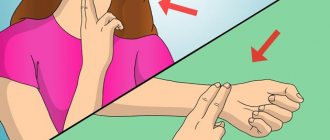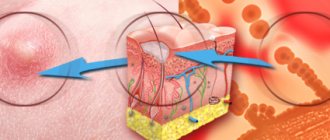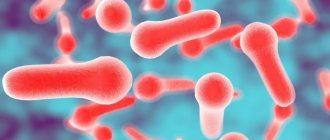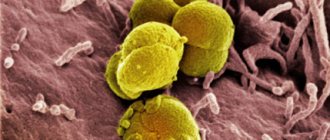Thyrotoxicosis (hyperthyroidism) is a pathological condition in which an excess of thyroid hormones is formed in the body. This is not a separate disease, but only a syndrome that can develop with a variety of health problems, not necessarily directly related to the thyroid gland. The clinical manifestations of thyrotoxicosis depend on how elevated the level of thyroid hormones is. What causes thyrotoxicosis, what symptoms it manifests, how it is diagnosed and how it is treated, you can learn from this article.
Symptoms of thyrotoxicosis and TSH levels
The reason for the development of clinical signs of thyrotoxicosis is the increased flow of thyroid hormones into the blood. Since there is an inverse relationship between their level and the production of pituitary thyroid-stimulating hormone (TSH), TSH production always decreases. In addition to the typical variants, women may also have menopausal, drug-induced thyrotoxicosis (hyperthyroidism).
For thyroid diseases
The variety of manifestations of thyrotoxicosis is associated with the role of thyroid hormones in the body. Almost all systems change their operation:
- cardiovascular - acceleration of the pulse, an increase in the upper (systolic) and a decrease in the lower (diastolic) pressure with an increase in the pulse, an increase in the speed of blood movement, rhythm disturbances that are difficult to treat (constant tachycardia, extrasystole, atrial fibrillation, atrial flutter), heart failure, angina attacks;
- nervous - increased excitability, irritability, a feeling of constant anxiety, fear (death, confined spaces, being in public), restlessness, tearfulness, fussiness, accelerated speech, impaired consistency of thinking, ability to concentrate, mood swings, hand tremors, insomnia;
- respiratory – shortness of breath, decreased pulmonary tidal volume, constant lack of air, poor tolerance of stuffiness;
- digestive – attacks of hunger, increased frequency of stools, abdominal pain; in severe cases, the liver enlarges and jaundice appears. elderly patients have low appetite up to complete aversion to food;
- musculoskeletal – weakness, rapid muscle fatigue, low exercise tolerance (hard to walk, climb stairs, carry heavy objects, get up from a chair), osteoporosis (low bone density) with bone pain, frequent fractures;
- visual - due to swelling of the tissue behind the eyeballs, they move anteriorly and the patient’s face takes on a typical appearance - bulging eyes, with a characteristic shine, swelling and dark circles under the eyes, the palpebral fissure is enlarged due to contraction of the muscles of the upper eyelid, rare blinking, weak trembling of the eyelids ;
- skin - hot and damp, thin and brittle hair and nails, detachment of the nail plate from the bed, swelling of the legs;
- urinary – frequent and copious urination;
- sexual – irregular, painful and scanty periods, may be accompanied by severe premenstrual syndrome with nausea, vomiting, muscle weakness, fainting, infertility;
- endocrine – a disorder of carbohydrate metabolism with an increase in blood sugar or an inadequate response to stress (changes in glucose tolerance), adrenal insufficiency due to the rapid destruction of hormones.
We recommend reading the article about subclinical thyrotoxicosis. From it you will learn about the causes of subclinical thyrotoxicosis, symptoms of nodular goiter, signs in women during pregnancy, as well as diagnosis, treatment and proper nutrition for thyrotoxicosis. And here is more information about diffuse toxic goiter.
In women in menopause
During the premenopausal period, even healthy women have an enlarged thyroid gland. Estrogens have a restraining effect on thyroid hormones, so when they decrease with age, mild hyperthyroidism appears even when the gland is in normal condition.
Against the background of her illnesses, menopause is especially difficult. Hot flashes intensify and become more frequent, followed by chills. Disorders of the heart and nervous system lead to the development of toxic cardiomyopathy and neurosis.
The combined course of menopause and hyperthyroidism can provoke a thyrotoxic crisis.
For drug-induced thyrotoxicosis
An overdose of medications containing thyroxine analogues causes drug-induced thyrotoxicosis. This may happen when:
- incorrectly selected amount of hormones for replacement therapy of hypothyroidism, consequences of surgery or treatment with radioactive iodine;
- rapid increase in dosage;
- combination of levothyroxine and high doses of iodine;
- use of Cordarone, interferon;
- individual sensitivity to drugs;
- impaired functioning of the kidneys and liver;
- treatment of elderly patients;
- self-administration for weight loss.
It is important to consider that it is extremely dangerous to use hormones for weight correction. There have been cases of sudden cardiac arrest in patients who took large doses of levothyroxine.
Symptoms
If we describe the manifestations of thyrotoxicosis from top to bottom, we will get a very characteristic image of a person with this syndrome.
- The eyes are the first to attract attention. When there is an excess of thyroid hormones, they are wide open and “bulging”, the person blinks rarely, causing the eyes to become red and watery, which increases the likelihood of getting conjunctivitis. Hair is thin, brittle and falls out. The face looks red, there may be beads of sweat on the forehead (heat production in the body increases), the skin is hot.
- A person with thyrotoxicosis speaks quickly, his facial expressions and gestures are expressive, his hands shake. Even the character changes: irritability, short temper appear, the person either laughs or cries. When there is an excess of thyroid hormones, your mood changes quickly, like a child’s.
- The neck is often, but not in all diseases, thickened. Sometimes you can roughly see the contours of an enlarged thyroid gland or a large nodule. An enlarged gland can put pressure on the trachea, making breathing difficult. Malignant tumors of the gland grow, causing damage to the trachea, larynx and esophagus, also causing hoarseness or loss of voice, impairment, and eventually the inability to swallow.
- The heart and blood vessels deserve special attention. Thyroid hormones increase the heart rate, causing blood pressure to rise, further increasing the load on the heart. This is fraught with heart attack and stroke. Often thyrotoxicosis becomes the impetus for the appearance of atrial fibrillation.
- The effect of excessive amounts of glandular hormones on the lungs is to speed up breathing. Perhaps this is the only symptom that does not threaten anything dangerous.
- With an excess of thyroid hormones, the intestines accelerate their peristaltic movements, which are normally designed to move food masses forward. In thyrotoxicosis, peristalsis is so active that diarrhea develops. However, the most dangerous thing is that food does not have time to be properly digested and absorbed - and the person loses weight. This is especially bad because thyrotoxicosis speeds up your metabolism and requires a lot more energy just to stay alive. Cachexia may develop, an extremely wasting, potentially fatal condition.
- With prolonged elevated levels of thyroid hormones, the bone structure is destroyed and osteoporosis develops. This is fraught with so-called spontaneous fractures, which can be caused by minor injuries and heal extremely poorly.
- In women, due to a prolonged excess of thyroid hormones, the regularity of menstruation is disrupted, libido decreases, and infertility develops.
By the way, we recommend reading the article Treatment of thyroid hyperplasia
Degrees of severity of the clinical course of thyrotoxicosis
| Severity | Symptoms |
| 1st degree | Increased excitability. Sweating. Heart rate up to 100 beats/min. Loss of up to 15% of body weight (3-5 kg). There are no ocular symptoms. Working capacity has been preserved. |
| 2nd degree | Heart rate up to 120 beats/min. Loss of up to 20% of body weight (8-10 kg). Weakness, sweating, tremors. Simultaneous increase in systolic and decrease in diastolic pressure. Working capacity is reduced. |
| 3rd degree | Heart rate up to 140 beats/min. Weight loss of more than 50% (cachexia). Atrial fibrillation. Lost ability to work. |
Health implications
In some patients, muscle weakness progresses at an accelerated pace. Its extreme manifestation is a sudden attack - hypokalemic paralysis in thyrotoxicosis. It first covers the muscles of the limbs, torso, and then the diaphragm. Stopping breathing can be fatal. Moreover, such manifestations may be the only symptoms of thyroid disease.
A specific complication, which is typical only for women, is crisis. It occurs against the background of infections, stress, physical fatigue, medication violations, and operations. Manifestations of thyrotoxic crisis include:
- a sharp increase in heart rate up to 200 beats, which sometimes turns into atrial fibrillation;
- increase in body temperature to 40-42 degrees;
- circulatory disorders - shortness of breath, suffocation, swelling of the extremities, enlarged liver;
- mental agitation, hallucinations, delusions, after which the patient becomes apathetic, weakened, consciousness and spatial orientation are impaired;
- profuse sweating, followed by dry skin due to dehydration;
- redness of the face and body.
The pressure is initially increased due to the systolic indicator; if help is not provided, then it decreases until a state of shock. A severe attack can have irreversible consequences.
Stages and degrees of thyrotoxicosis of the thyroid gland
The following stages of disease development are distinguished:
- Mild degree of thyrotoxicosis . It is characterized by minimal manifestations, which include a decrease in body weight by up to 10%, a decrease in performance and a feeling of constant fatigue. The heart rate increases to 100 per minute.
- Moderate severity - a decrease in body weight by 20%, tachycardia up to 120 beats/min, an increase in blood pressure up to 150/60, the appearance of symptoms from the visual organs, a significant decrease in performance.
- Severe degree – tachycardia over 120 beats/min, blood pressure 150-160/40, complete loss of ability to work.
The severity of symptoms and the severity of the disease also depend on the duration of the disease, the level of hormones in the blood and the age of the patient.
At the last stage, a thyrotoxic crisis may occur, which is characterized by the development of the following abnormalities:
- adrenal insufficiency;
- heart pain, suffocation;
- increased motor activity, which is replaced by complete apathy and disorientation;
- pain in the epigastric region, vomiting;
- left and right ventricular failure and other pathologies.
Diagnosis of the disease
When identifying hyperthyroidism, characteristic symptoms are taken into account, but the diagnosis can only be confirmed after examination. Patients are prescribed:
- blood test for TSH and thyroid hormones - TSH is reduced and thyroxine and triiodothyronine are increased;
- Ultrasound of the thyroid gland helps to detect a nodule, cyst, and also measure the size of the organ;
- An ECG is necessary to study rhythm disturbances, the presence of myocardial hypertrophy (thickening), and overload of the heart;
- scintigraphy with radioisotopes determines the degree of activity of the node and surrounding tissue;
- a biopsy shows which cells the node is formed from.
The last two studies are indicated only if there is a suspicion of the possibility of a tumor lesion of the thyroid gland.
Diagnosis of thyrotoxicosis of the thyroid gland
To identify thyrotoxicosis of the thyroid gland, the following main types of tests and instrumental examinations are performed:
- CBC, BAM, biochemical blood test;
- determination of the level of glucose, thyroid hormones T3, T4, TSH in the blood;
- detection of antibodies to thyroid-stimulating hormones in the blood;
- Ultrasound of the thyroid gland to determine the enlargement of the gland and the presence of nodules in it.
According to indications, the following may be prescribed:
- Thyroid biopsy for cytological examination to exclude a malignant process in this organ. The price of a medical procedure is about 1000 rubles.
- Scintigraphy using radioisotope substances. In paid clinics, the cost of such an examination averages 3,000 rubles.
- ECG (from 100 rub.).
Additionally, you may need to consult such specialists as:
- ophthalmologist – to evaluate and treat visual disorders;
- neurologist - if there are abnormalities in the central nervous system;
- infectious disease specialist , ENT doctor, phthisiatrician, dentist or gynecologist - to identify infectious diseases;
- dermatologist – for mucous edema.
The most reliable sign of the disease is a decrease in TSH levels of less than 0.5 mIU/l.
In addition, the causes of pathology can be identified based on the following criteria:
- increased T3, T4, concentration of antibodies to thyroid hormones - autoimmune thyrotoxicosis;
- normal levels of T3, T4, TSH concentration <0.1 mIU/l – latent thyrotoxicosis;
- an increase in ESR is a characteristic sign of subacute de Quervain’s thyroiditis;
- increased hCG in the blood – malignant tumor of the chorion;
- hypoechoic formations, calcification, growth of a node beyond its capsule in the thyroid gland on ultrasound images – cancer;
- decreased uptake of radioactive substances during scintigraphy – subacute or postpartum thyroiditis;
- an increase in their uptake is a pathology associated with increased production of hormones in the thyroid gland.
Treatment of thyrotoxicosis
Conservative therapy is carried out with drugs that suppress the activity of hormone formation. They are called thyreostatics. The most prescribed of them are Mercazolil, Tyrosol, Espa-carb. They prevent the accumulation of iodine in the thyroid gland, which is needed for the formation of hormones.
Beta blockers are also indicated for patients, as they reduce the symptoms of thyrotoxicosis. Their normalizing effect on blood pressure and heart rate is especially important. Most patients, when adding these medications to therapy, note an improvement in their well-being, even with high concentrations of thyroid hormones.
Against the background of autoimmune thyroiditis with mild hyperthyroidism, the use of Anaprilin, Metoprolol or Atenol may be the main method.
Non-medicinal types include sanatorium treatment at cardiological resorts with the appointment of sage or pine, radon baths, rain and circular showers. Thermal and electrical procedures are contraindicated.
Indications for removal of the thyroid gland are:
- ineffectiveness of drug therapy;
- intolerance to thyreostatics;
- single node;
- excessive growth of part of an organ (one lobe).
In these cases, partial removal may restore normal hormone levels in the blood. If a large part of the gland is affected or there is its excessive enlargement with compression of surrounding tissues, then subtotal (no more than 5 g of each lobe is left) resection (removal). This type of treatment is less likely to be accompanied by relapse of thyrotoxicosis than partial treatment, but patients require levothyroxine replacement therapy for life.
Radioactive iodine can be taken simultaneously with thyreostatics to gradually reduce their dose. Radioiodine penetrates the thyroid gland and accumulates mainly in cells with increased activity.
Gradually, such nodes are destroyed, after a few weeks the organ becomes smaller, and the formation of hormones decreases. Sometimes the patient needs to take several courses for a lasting effect. The outcome of therapy may also be low gland function, requiring the use of hormones.
Causes of thyrotoxicosis
The most common causes of thyrotoxicosis are:
- diffuse toxic goiter (Graves' disease, Graves' disease). This disease accounts for up to 80% of all cases in the structure of thyrotoxicosis. In this condition, specific antibodies are formed in the body, which attach to the cells of the thyroid gland and are perceived by them as thyroid-stimulating hormone (such an insidious deception). As a result, thyroid cells intensively produce thyroxine and triiodothyronine, mistakenly believing that their deficiency has occurred. The thyroid gland diffusely increases in size;
- nodular toxic goiter (Plummer's disease). With this disease, not the entire thyroid gland, but only its individual sections (in the form of nodes) more actively produces thyroid hormones. More common in older people;
- autoimmune thyroiditis (Hashimoto's thyroiditis) or subacute thyroiditis (viral inflammation of the thyroid gland). In these conditions, the amount of thyroid hormones produced does not differ from the norm, and an increase in their content in the blood occurs as a result of the destruction of thyroid cells and the release of their contents (that is, created hormones) into the blood. These diseases lead to mild forms of thyrotoxicosis in comparison with diffuse toxic goiter;
- Excessive intake of artificial thyroid hormones from the outside. This situation occurs when treating hypothyroidism with L-thyroxine, when its dose is not controlled by hormone tests. This is the so-called artificial thyrotoxicosis. There are also cases of using thyroxine as a means of losing weight, which is illegal and can also lead to artificial hyperthyroidism;
- excessive intake of iodine into the body. This is a fairly rare cause of thyrotoxicosis, but it cannot be discounted. The source of iodine can be not only food, but also medications, for example Amiodarone (an antiarrhythmic drug often used for heart rhythm disorders);
- thyroid adenomas;
- pituitary tumors with increased production of thyroid-stimulating hormone;
- ovarian tumors that can also produce thyroid hormones (for example, struma ovary).
Nutrition for thyroid problems
If there is excessive formation of hormones, it is necessary to include in the diet foods that block the flow of iodine into the thyroid gland, that is, they act like thyreostatics. It is advisable that there be at least 300 g of them daily. You can choose any well-tolerated product, but it is optimal to alternate several of them.
The list includes plants belonging to legumes and cruciferous plants, as well as those containing bioflavonoids:
- cabbage - cauliflower, white cabbage, broccoli, Brussels sprouts, kohlrabi, broccoli;
- greens - watercress, spinach;
- turnip, radish, daikon, radish;
- peas, beans, soybeans, peanuts;
- peaches, strawberries.
Vegetables and fruits should be eaten raw or minimally cooked, and legumes should be pre-soaked overnight and well cooked. Suitable sources of protein include lean chicken, turkey, and fish (only river fish, no more than 2 times a week). Exclude stimulating drinks with caffeine (strong tea, coffee, cocoa), alcohol, spicy foods and spices from the diet. Seafood, seaweed and nuts are not recommended for thyrotoxicosis.
Thyrotoxicosis causes disruption of the functioning of almost all organs. The biggest negative effect is on the heart and nervous system, metabolic processes. In women, the menstrual cycle is disrupted and the menopause is more difficult.
We recommend reading the article about the symptoms and treatment of hypothyroidism. From it you will learn about the causes and symptoms of hypothyroidism in men and women, as well as about the diagnosis, treatment of the disease and prevention. And here is more information about nodular goiter of the thyroid gland.
The medicinal version of the disease appears with an overdose of thyroxine analogues or self-medication of obesity. For diagnosis, a decrease in TSH and an increase in the level of thyroid hormones are taken into account. Therapy is carried out with thyreostatics, radioactive iodine, or part of the gland is removed. A special diet is required.
Possible complications
Thyrotoxicosis of the thyroid gland is a disease that, if left untreated, can lead to the following complications:
- Thyrotoxic crisis. This condition is life-threatening. Its development can be facilitated by a long course of thyrotoxicosis, infectious diseases, intense physical activity, and surgery. A severe crisis is characterized by the development of acute heart failure, severe redness of the face, elevated body temperature (up to 41°C), a sharp drop in blood pressure, and coma.
- Enlargement of the left ventricle in the heart, overload of its right parts, development of arterial hypertension.
- The formation of pulmonary hypertension due to increased vascular resistance in the lungs. As a result, right ventricular failure may occur, which leads to premature death of the patient.
- With multinodular toxic goiter, elderly patients often experience attacks of tachycardia, atrial fibrillation, and congestive heart failure.
- Depression and mental disorders (delirium, mania, schizoaffective disorders).
- Damage to the organs of vision - redness and swelling of the eyelids, conjunctiva; damage to the optic nerve and cornea, which can lead to complete blindness.
Thyrotoxicosis is dangerous due to the development of disorders in other organs and systems. A change in the normal functioning of the thyroid gland in the initial stages is accompanied by the development of nonspecific symptoms.
This disease can be most accurately determined only through laboratory and instrumental studies. Treatment is carried out with the help of substances that suppress the activity of the thyroid gland, as well as the removal or destruction of its tissue using radioactive iodine or concentrated alcohol.
Article design: Oleg Lozinsky
Useful video
Watch the video about thyrotoxicosis in women and men:
Similar articles
- Nodular goiter of the thyroid gland: types - diffuse...
Patients do not fully understand how dangerous a nodular goiter of the thyroid gland can be. But it has many manifestations - diffuse, colloidal, toxic, non-toxic. In the first stages, symptoms may be hidden. Treatment is selected by the doctor, sometimes this means complete removal of the organ. Read more - Subclinical thyrotoxicosis: main symptoms...
Subclinical toxicosis occurs mainly in areas unfavorable for the amount of iodine. Symptoms in women, including during pregnancy, are vague. Only irregular periods can indicate the problem of nodular goiter. Read more
- Hypothyroidism: symptoms and treatment in women and men...
It is quite difficult to identify hypothyroidism; symptoms and treatment can only be determined by an experienced doctor. It can be subclinical, peripheral, often hidden until a certain point. For example, in women it can be detected after childbirth, in men - after surgery or injury. Read more
- Diffuse toxic goiter: causes, symptoms...
Often, diffuse toxic goiter is congenital, but it is provoked by certain factors in adulthood. Symptoms depend on the extent of the damage. An important test is hormones for Graves' disease. Diagnostics includes ultrasound, CT, biopsy and others, after which treatment is prescribed. Read more
- Toxic goiter in children: signs, treatment...
Mostly toxic goiter in children occurs as a hereditary factor. Signs are manifested primarily by moodiness, poor sleep, and others. What is the possible treatment for diffuse toxic goiter? Read more
What is thyrotoxicosis of the thyroid gland
Thyrotoxicosis of the thyroid gland is a pathological condition in which excessive production of hormones occurs in this organ. Overproduction does not occur in isolation: it causes disturbances in the functioning of all body systems, including the brain.
Synonyms for this syndrome in different countries are also hyperthyroidism, Graves' disease, Graves' disease, and diffuse toxic goiter. A variety of terminology is associated with the key reason underlying the occurrence of the pathology.
Causes
The reasons contributing to the development of thyrotoxicosis include an unstable psycho-emotional background.
The causes of thyrotoxicosis are more than diverse; both physiological, psycho-emotional and other factors, as well as underlying diseases, can lead to the development of pathology. It should be noted that the most frequently identified root causes include the patient’s existing ailments.
The instructions below, as well as the video in this article, will help you become more familiar with the list of factors that have a direct impact on the development of thyrotoxicosis:
- Infectious diseases. In some cases, the disease develops as a result of damage to the thyroid tissue by pathogenic microflora.
- Genetic predisposition. According to practical medicine, the disease is most often detected in individuals with a hereditary predisposition to the development of thyrotoxicosis.
- Negative psycho-emotional background. Both systematic experiences, fears, negative emotions, and one-time stress can lead to the development of pathology.
- Artificial changes in hormonal levels caused by taking medications.
- Pathologies of the gonads, accompanied by disturbances in the production of hormones.
Is a “broken” gene to blame?
In addition, factors contributing to the occurrence of thyrotoxicosis include uncontrolled use of medications that contain a significant amount of the hormone thyroxine. As a rule, this happens due to non-compliance with medical recommendations and unauthorized excess of the prescribed medication dose.
Advice! If there is a need to take hormonal medications, you should take the prescribed medications in accordance with the regimen and dosage prescribed by your doctor. The price of non-compliance with this rule is more than high - the development of not only thyrotoxicosis, but also a host of other diseases of a similar etiology.
Signs of thyrotoxicosis
The higher the level of thyroid hormones, the more severe the symptoms will be:
- increased heart rate, tachycardia;
- exophthalmos - “bulging” eyes;
- rapid breathing, shortness of breath;
- a feeling of heat that does not correspond to the ambient temperature;
- excessive sweating without noticeable physical exertion at rest;
- sudden weight loss not associated with changes in diet;
- tremor of the limbs or trembling throughout the body;
- increased fatigue;
- deterioration of memory and ability to concentrate;
- sleep disorders;
- menstrual cycle disorders in women;
- loss of sexual desire in men, impotence;
- emotional instability;
- rapid unmotivated changes in mood;
- decreased resistance to stress.
If you have several symptoms at once, you need to urgently contact an endocrinologist who will prescribe a blood test to check the level of thyroid hormones.
Also, a disease of the thyroid gland can be manifested by its physical changes:
- the growth of the gland body leads to an increase in the cervical region, a “tight collar effect” occurs;
- noticeable swelling of the neck area;
- with significant enlargement of the gland, swallowing and breathing may be difficult.
It is possible that a hormonal disorder may occur without visible manifestations in the neck area.
It is very important to monitor the level of thyroid hormones in pregnant women, since maternal hyperthyroidism can cause thyrotoxicosis in the fetus, disrupting its development in the womb.
In some patients, the disease can manifest itself very strongly in the emotional sphere and be similar to a mental disorder.
The disease progresses differently in women, men and children. Symptoms may also differ depending on gender and age.
Manifestation of the disease in women
The disease affects not only a woman’s health but also her appearance:
- the condition of the hair worsens, it becomes thin, brittle, dry, disheveled;
- the structure of the nails is disrupted, they become lumpy, the outer part of the nail plate may peel off;
- the menstrual cycle is disrupted, periods become painful, and there is a noticeable decrease in the amount of menstrual flow;
- hypertension and tachycardia occur.
Women may experience mental suffering when observing negative changes in their appearance. Hyperthyroidism in young women can lead to decreased fertility or even infertility.
Thyrotoxicosis symptoms in men
Men suffer thyrotoxicosis more severely than women. In addition to the symptoms common to both sexes, men also exhibit characteristic symptoms:
- a sharp decrease in muscle strength, possibly excessive;
- muscle mass is lost, it becomes impossible to perform “physical” work;
- Nervousness and irritability appear;
- tachycardia and rapid breathing;
- decreased potency;
- Gastrointestinal disorders and diarrhea are possible;
- appetite increases with weight loss;
- nervousness, irritability;
- insomnia and other sleep disorders.
The disease causes increased work of the heart, which in men can more quickly result in cardiovascular diseases.
Symptoms in children
In children, the disease may not manifest itself as a change in appearance (bulging eyes effect, thickening of the neck). Most often, children experience the following symptoms:
- inability to concentrate and sit still;
- nervousness and emotional instability;
- hyperactivity;
- weight loss with increased appetite;
- irritability and anger;
- moodiness;
- sleep disorders.
With thyrotoxicosis, a child can become very thin, so it is important to increase the diet to a level slightly higher than recommended for his age. Children do not need to restrict calories, since increased energy metabolism requires more nutrients.
Folk recipes
Treatment with folk remedies can begin only after an accurate diagnosis has been made and the cause of the increased secretion of hormones has been identified. You should also get your doctor's approval before using any prescriptions.
Folk remedies for normalizing thyroid function:
- valerian decoction. This folk remedy is recommended to be taken three times a day. It effectively helps normalize the functioning of the gland;
- beet. It is recommended to consume it raw daily. The vegetable contains a lot of iodine, which is an important element for the normal functioning of the thyroid gland;
- hawthorn infusion. It is allowed to use this folk remedy for no more than 3 weeks, after which a break is taken for 2 weeks;
- rose hip. An excellent folk remedy that helps stabilize the functioning of the gland. Rose hips can be taken in any form.
Prevention of hyperthyroidism
The following recommendations are followed:
- They strengthen the body and lead an active physical life.
- Eat foods rich in vitamins.
- Regularly visit an endocrinologist.
- Eat foods containing iodine in moderation.
- They don't sunbathe.
Maybe you will be interested in information about the causes and treatment of hypotension? How do folk remedies help with “symptoms of angina pectoris”? Is it possible to treat ventricular extrasystole at home? You will find answers to these questions on our website. What effective folk remedies for hyperthyroidism do you know?
What happens if thyrotoxicosis is not treated?
In case of untimely and inadequate treatment of thyrotoxicosis, complications develop: atrial fibrillation (atrial fibrillation), arterial hypertension, as a result of which coronary heart disease develops and its course worsens. All these complications are associated with the toxic effect of increased levels of thyroid hormones on the heart (accelerated metabolism in myocardial cells increases the frequency and strength of heart contractions, as a result of which complications develop). In severe cases, disruption of the central nervous system also occurs with the development of thyrotoxic psychosis.
Forms of the disease
Depending on the severity of the condition, the following forms of thyrotoxicosis are distinguished:
- Easy. Usually occurs when the level of hormones is slightly exceeded. Disturbances are observed mainly in the thyroid tissue. Other organs and organ systems remain in almost normal condition. Slight tachycardia and mild shortness of breath are possible. Symptoms are mild. A person may not even be aware of his illness. Correcting the body's condition at this stage of the disease is quite easy.
- Average. Severe tachycardia and increased breathing are observed. May be accompanied by rapid weight loss. Energy metabolism increases. The level of adrenal hormones and cholesterol levels decreases. Emotional instability may occur. It is necessary to urgently consult a doctor to compensate for the condition and prevent the development of a severe form.
- Heavy. Occurs if treatment was not carried out at earlier stages. The symptoms of moderate form are supplemented by general severe exhaustion of the body. This is a very dangerous condition. Impaired body function can be irreversible, and restoring hormonal balance becomes extremely difficult.
The asymptomatic form is called subclinical. The disease is detected only after laboratory tests.
It is important to start treatment on time - the less severe the symptoms, the higher the likelihood of quickly adjusting the body’s hormonal balance and restoring metabolism.
Folk remedies
We have figured out what thyrotoxicosis of the thyroid gland is, and now we can talk about its treatment using folk remedies.
- Tea to stabilize the nervous system: reduces excitability, regulates rapid heartbeat and blood pressure.
| Ingredient used | Number of grams |
| Valerian, rhizome | 7,9 |
| Passion flower red and white, grass | 4,0 |
| Chamomile, flowers | 4,4 |
| Water | 600,0 |
Manufacturing method and use:
- Valerian rhizome is finely chopped.
- All components are poured with boiling water.
- Place in a water bath.
- Simmer without letting it boil for 45 minutes.
- Leave the broth until it cools down.
- Filter.
- Drink a quarter glass before meals (4).
Tea effectively relieves hand tremors. Duration of use – 2 weeks.
- To reduce nervous tension: infuse 100 grams of the dry aerial part of passionflower (passion flower) in a liter of vodka in the dark for one and a half to two weeks. The filtered tincture is taken 30-50 drops an hour before bedtime. Relieves nervous excitement, improves gland function. Passion flower extract is included in medications for the treatment of hyperthyroidism.
- Tea with hops: has a positive effect on the thyroid gland, improves the condition of the myocardium and overall well-being.
| Ingredient used | Number of grams |
| Hops, cones | 1,3 |
| Baikal skullcap, root | 4,0 |
| Peony evasive, rhizome | 12,0 |
| Water | 600,0 |
Manufacturing method and use:
- Peony and skullcap rhizomes are finely chopped.
- All components are mixed and placed in a container.
- Fill the collection with water that has just boiled.
- Prepared using a water bath.
- The cooking time is 60 minutes; the composition is not brought to a boil.
- Wait until the medicine cools down.
- Strain.
- Drink 30-40 ml of decoction on an empty stomach, no later than an hour before eating. Do not consume more than 4 times a day.
Contraindicated: during pregnancy, lactation, under 12 years. Restrictions on use: increased stomach acidity, hypotension, kidney disease, brain disease, alcoholism, head injuries.
- To reduce exophthalmos: improves vision, improves brain function.
| Ingredient used | Number of grams |
| Valerian, rhizome | 7,9 |
| Astragalus wooliflora, herb | 4,0 |
| Lesser periwinkle, grass | 4,0 |
| Comfrey, rhizome | 10,0 |
| Water | 1000,0 |
Manufacturing method and use:
- All roots are finely chopped.
- The components are mixed and placed in a thermos.
- Add boiling water.
- Macerate the collection for 2 hours.
- The cooled infusion is filtered.
- The infusion is taken according to the scheme - 50 ml five times a day between meals, the last dose is an hour before bedtime.
Duration of use: 2 weeks. The infusion lowers blood pressure.
Restrictions on use: kidney diseases accompanied by tissue swelling, chronic heart pathologies, children under 12 years of age, expecting a child, breastfeeding.
- To relieve the negative impact on the gastrointestinal tract: make a mixture of equal parts - bergenia roots, immortelle flowers, corn silk, mint leaves. The mixture in the amount of 3 tablespoons is placed in a thermos and infused in boiling water (600 ml) for 2 hours. Drink half a glass of infusion an hour before meals.
Do not use for: constipation, increased blood clotting, hypotension, tachycardia.
- In case of decreased immunity due to decreased T-function: use pharmaceutical tinctures or those prepared independently. Duration 3-4 weeks. Drink tincture of Rhodiola rosea, ginseng, eleutherococcus - before main meals (three times) drop 15-20 drops of tincture onto water and sugar.
Do not drink for longer than 40 days.
- Potentilla decoction: bring a tablespoon of finely chopped roots (1) in a glass of boiling water to the point of boiling. Simmer the composition in a thermos (poured) for 3-5 hours. Take a monthly course of 100-150 ml three times a day. The finished decoction should not be stored for longer than a day.
- Woodlice juice: squeeze the juice from the fresh washed aerial part of the plant, mix 4 parts juice and 1 part honey. Eat a tablespoon an hour before meals. Use if you are not allergic to honey.
- Chicory tea: 10 grams of chicory root ground into powder and boiled in half a liter of water for 3 minutes. Take 50-70 ml three times a day.
Treatment
Therapy for thyrotoxicosis is based on the use of thyreostatic drugs that have the ability to reduce the production of thyroid hormones. For this purpose, Tyrozol, Thiamazol, etc. are used. The effectiveness of the drugs is due to their properties to prevent the absorption of iodine by the thyroid gland. Drug treatment lasts for several months.
In the absence of a positive result from conservative therapy, to prevent the adverse consequences of thyrotoxicosis, it may be necessary to perform surgery for the purpose of partial resection of organ tissue. This will make it possible to reduce the number of cells that synthesize thyroid hormones.
The absorption of radioactive iodine by the thyroid gland also leads to the destruction of endocrine organ tissue. This method is not used often because it is difficult to find the optimal dose.
Therapy for thyrotoxicosis is based on the use of thyreostatic drugs that have the ability to reduce the production of thyroid hormones. For this purpose, Tyrosol is used.
Is it possible to cure
It is impossible to get rid of thyrotoxicosis forever; it is incurable. However, with the help of timely and comprehensive therapy, it is possible to restore the normal functioning of the thyroid gland, stabilize the patient’s condition and prevent the development of complications.
Folk remedies
The inclusion of traditional methods in the complex treatment of the disease is indicated. They can be used both in the initial stages of thyrotoxicosis and after removal of the thyroid gland. The main thing is to coordinate the use of certain products with your doctor.
The effectiveness of traditional methods is due to the healing properties of plants and some products to have a beneficial effect on the thyroid gland.
Main recipes:
- Nut tincture. Chop walnuts (30 g), pour in 1 glass of liquid honey and 1 liter of vodka. Mix the product and leave for 2 weeks in a dark place. The container with the tincture needs to be shaken periodically. For thyrotoxicosis, take the medicine 1 tbsp. l. daily 20-30 minutes before meals.
- Tincture of pine buds. Grind the raw materials on a grater (0.5 l), pour in 1 l of vodka and leave for 10-14 days. The product should be used externally, lubricating the thyroid gland area 2-3 times a day.
- Beetroot and carrot juice. Mix in a 3:1 ratio and take 1 glass per day.
The effectiveness of traditional methods is due to the healing properties of plants and some products to have a beneficial effect on the thyroid gland.
Diet for thyrotoxicosis
A diet for thyrotoxicosis of the thyroid gland helps to overcome the disease: the patient’s menu is compiled taking into account the reduction in the amount of foods rich in iodine. It is necessary to strictly ensure that the amount of iodine entering the body per day does not exceed 200–300 mcg. Food should be fortified and balanced.
Avoid foods that have a stimulating effect on the nervous system:
- coffee;
- strong tea;
- spices;
- chocolate;
- cocoa.
The following products are allowed:
- bread;
- low-fat dairy products;
- porridge;
- lean meat and fish;
- herbal teas, decoctions, compotes, fruit drinks.
Approximate menu:
- Breakfast: oatmeal, cheesecakes, herbal tea.
- Afternoon snack: baked apples, cheese, vegetable salad with olive oil.
- Lunch: vegetarian soup, mashed potatoes with water, steamed meatballs, fruit or berry compote.
- Dinner: stewed fish, vegetable salad.
- Late dinner: fermented milk drinks.
Course of hyperthyroidism
The development of the disease is characterized by the following general symptoms:
- Hypersensitivity of tissues to catecholamines.
- Increased concentration of globulin in tissues.
- Destruction of the glucocorticoid hormone cortisol.
Clinical manifestations of hyperthyroidism
Hormonal activation during hyperfunction of the thyroid gland affects all processes occurring in the body. For this reason, thyrotoxicosis manifests itself in many ways and has the following symptoms:
- Vegetative-vascular disorders. These include: irritability, increased excitability, mood swings, feelings of fear, increased rate of speech, tremors of the limbs, sleep disturbances, unsteady gait and other disturbances in the activity of the central nervous system.
- Exophthalmos as a manifestation of ophthalmological symptoms.
- Dry eyes, inability to focus on an object, dizziness, etc. may occur.
- Cardiovascular pathologies (atrial fibrillation, tachycardia). As the pressure gap increases, heart failure may develop.
- Changes in appetite, abdominal pain, loose and frequent stools. Symptoms of indigestion and bile stagnation appear, which are accompanied by paroxysmal pain in the abdomen and hypochondrium.
- Accumulation of fluid in the lungs, swelling on the face, lower extremities, development of persistent shortness of breath when walking, lifting or at rest.
- The development of thyrotoxic myopathy, which manifests itself as chronic fatigue and heaviness in the muscles. There are dysfunctions of the musculoskeletal system and diseases of the musculoskeletal system (osteoporosis, limited joint mobility, pain when walking). Muscle paralysis may develop, which resolves with proper treatment.
- Changes in the menstrual cycle, its regularity, dizziness and migraines. In extreme cases, amenorrhea and infertility cannot be ruled out.
- Weight loss due to active metabolism. With the accelerated breakdown of cortisol, adrenal insufficiency develops, the liver becomes enlarged, and jaundice occurs in severe forms. Obvious symptoms are: swelling, thirst, frequent urination, early gray hair, hair loss, brittle nails.
Upon external examination, swelling in the area of the thyroid gland, asymmetry is visible, nodular formations are felt when palpated. In old age, hyperthyroidism is characterized by typical symptoms: anxiety, frequent depression.
Many patients suffering from this disease are concerned about the question of whether hyperthyroidism can be cured without surgery, using what medications and folk remedies. Let's consider methods of treating thyrotoxicosis at different stages of the disease.
Nutrition and diet
When treating the main cause of thyrotoxicosis, elimination of the symptoms of the disease is prescribed. Since a person loses weight even if he eats a lot of food, special nutrition and diet are prescribed here. The patient must change his diet in order to gain weight safely for his own health against the background of a decrease in the production of thyroid hormones.
The patient's menu should consist of fruits and vegetables, proteins and carbohydrates. Vitamins A, C, E should be actively taken. The diet includes:
- Fermented milk and dairy products.
- Dried fruits instead of chocolate and sweets.
- Juices and compotes instead of sparkling water and coffee.
- The meat is boiled or stewed, but not fried.
- White meat broths.
You should avoid strong tea, alcohol and spices during treatment. These measures help in gradually increasing weight as a person begins to gain weight due to a decrease in hormone production. Changing your diet promotes favorable recovery.
go to top
What causes hyperthyroidism
At risk for this disease are those patients who have at least one blood relative suffering from disorders of the endocrine system.
Hereditary predisposition creates a background against which provoking factors can play their fatal role and trigger the pathological process.
What is the trigger for thyrotoxicosis:
Restructuring of the endocrine system. In women, the peak incidence occurs after 45 years, especially often after menopause.
A decrease in estrogen levels and a transition to a different hormonal level often provokes the growth of cysts, nodules and goiters of the thyroid gland.
In women during pregnancy and in the first year after the birth of a child, the risk of developing thyroiditis also increases significantly.
Endometriosis, ovarian cystosis and other pathologies of the reproductive system in women cause hormonal imbalance and provoke thyroid diseases.
Treatment of such ailments is carried out by a gynecologist, who should be contacted as soon as the characteristic symptoms of the disease appear.
Folk remedies do not effectively treat diseases such as endometriosis.
Lack of iodine. According to rough estimates, 80% of the CIS population has chronic iodine deficiency.
To supply the thyroid gland with iodine, you need to eat fish oil, fish, caviar, seafood (mussels, squid) or seaweed once a week.
Not every person can afford such a diet, which is why there are so many patients with thyroid tumors.
Injuries. Direct mechanical injuries, strangulation or a blow to the neck, lead to hemorrhages.
If the gland is unable to eliminate the hematoma, a cyst forms.
In addition to mechanical injuries, the functioning of the thyroid gland is disrupted by overheating, hypothermia, exposure to ionizing radiation, and poisoning.
Regular food poisoning, if severe, can also cause damage to the gland.
Autoimmune reaction. For an unknown reason, the immune system in some people begins to perceive thyroid cells as foreign and produce antibodies to thyroid peroxidase.
This leads to autoimmune thyroiditis, focal or diffuse inflammation of the gland.
With a large-scale inflammatory process, the thyroid gland can no longer adequately cope with its function, and thyrotoxicosis or its opposite, hypothyroidism, develops.
Infection. In some cases, cysts, nodes and thyroiditis occur due to the entry of pathogenic microorganisms from the outside.
When a person is sick, bacteria and viruses travel through the circulatory and lymphatic systems and spread throughout the body.
Since the thyroid gland has a developed network of blood and lymphatic vessels, it is easily susceptible to infection.
Timely treatment of problems such as pulpitis or sinusitis is the prevention of infectious thyroiditis and other diseases of the thyroid gland.
Treatment with folk remedies can only be carried out in consultation with a qualified doctor.
Psychological and physical fatigue, insomnia, stress, starvation. The endocrine system reacts most quickly to mental or physical stress.
Regardless of whether the patient is aware of his problem, stress increases the level of adrenaline and related hormones.
Which, in turn, adversely affects the entire hormonal background and jeopardizes the thyroid gland.
Thyrotoxicosis due to stress is a common occurrence, especially in women.
Tumors of the pituitary gland, hypothalamus, testes and ovaries, thyroid gland, which lead to hormonal imbalance.
Unknown etiology of the disease, idiopathic thyrotoxicosis.
All clinical cases in which it was not possible to establish the cause of the malfunction of the thyroid gland are combined into this category.
Usually, for the development of a disease, not one, but two or three reasons are needed simultaneously.
For example, in women with a hereditary predisposition, thyretoxicosis appears during pregnancy, with high levels of stress and lack of iodine in the body.
Prevention
Methods for preventing thyrotoxicosis:
- avoid bad habits (smoking, alcohol abuse and junk food);
- lead an active lifestyle, play sports;
- avoid stressful situations if possible;
- eat mostly healthy foods;
- Be regularly checked by an endocrinologist and undergo an ultrasound of the thyroid gland.
Particular attention to prevention should be paid to people with a genetic predisposition (those who have blood relatives with this disease).











